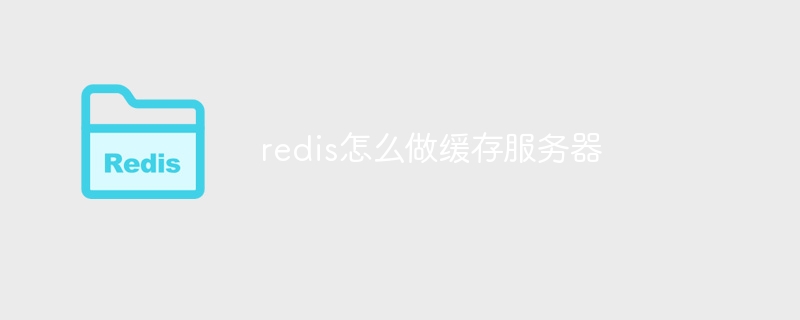Redis as a cache server answer: Redis is an open source, high-performance, distributed key-value store that can be used as a cache server. Reason: High Performance: Store data in memory for fast access. Low latency: Optimized data structures and operations to minimize latency. Scalability: Easy to shard and cluster to adapt to high loads. Durability: Data can be persisted to disk to ensure data security. Rich features: Provides multiple data types, multi-level caching and publish/subscribe functions.

Redis as a cache server
Redis is an open source, high-performance, distributed key-value store that is Widely used as a cache server. It provides fast, reliable data access and is ideal for storing highly mobile, low-latency data.
Why use Redis as a cache server?
The structure of Redis cache server
Redis cache server consists of the following components:
Operation of Redis cache server
Client applications communicate with the Redis cache server through the Redis protocol. Clients can send commands to store, retrieve, delete, or query data in the cache. The Redis server processes these commands and returns responses.
When data is requested for the first time, Redis retrieves it from the data source (such as a database) and stores it in the cache. Future requests will be served directly from the cache, thus avoiding expensive database queries.
Over time, the data in the cache may expire or be no longer needed. The retirement strategy periodically deletes this data to make room for new data.
Advantages of using Redis as a cache server
There are many advantages to using Redis as a cache server, including:
The above is the detailed content of How to use redis as a cache server. For more information, please follow other related articles on the PHP Chinese website!
 Commonly used database software
Commonly used database software
 What are the in-memory databases?
What are the in-memory databases?
 Which one has faster reading speed, mongodb or redis?
Which one has faster reading speed, mongodb or redis?
 How to use redis as a cache server
How to use redis as a cache server
 How redis solves data consistency
How redis solves data consistency
 How do mysql and redis ensure double-write consistency?
How do mysql and redis ensure double-write consistency?
 What data does redis cache generally store?
What data does redis cache generally store?
 What are the 8 data types of redis
What are the 8 data types of redis




